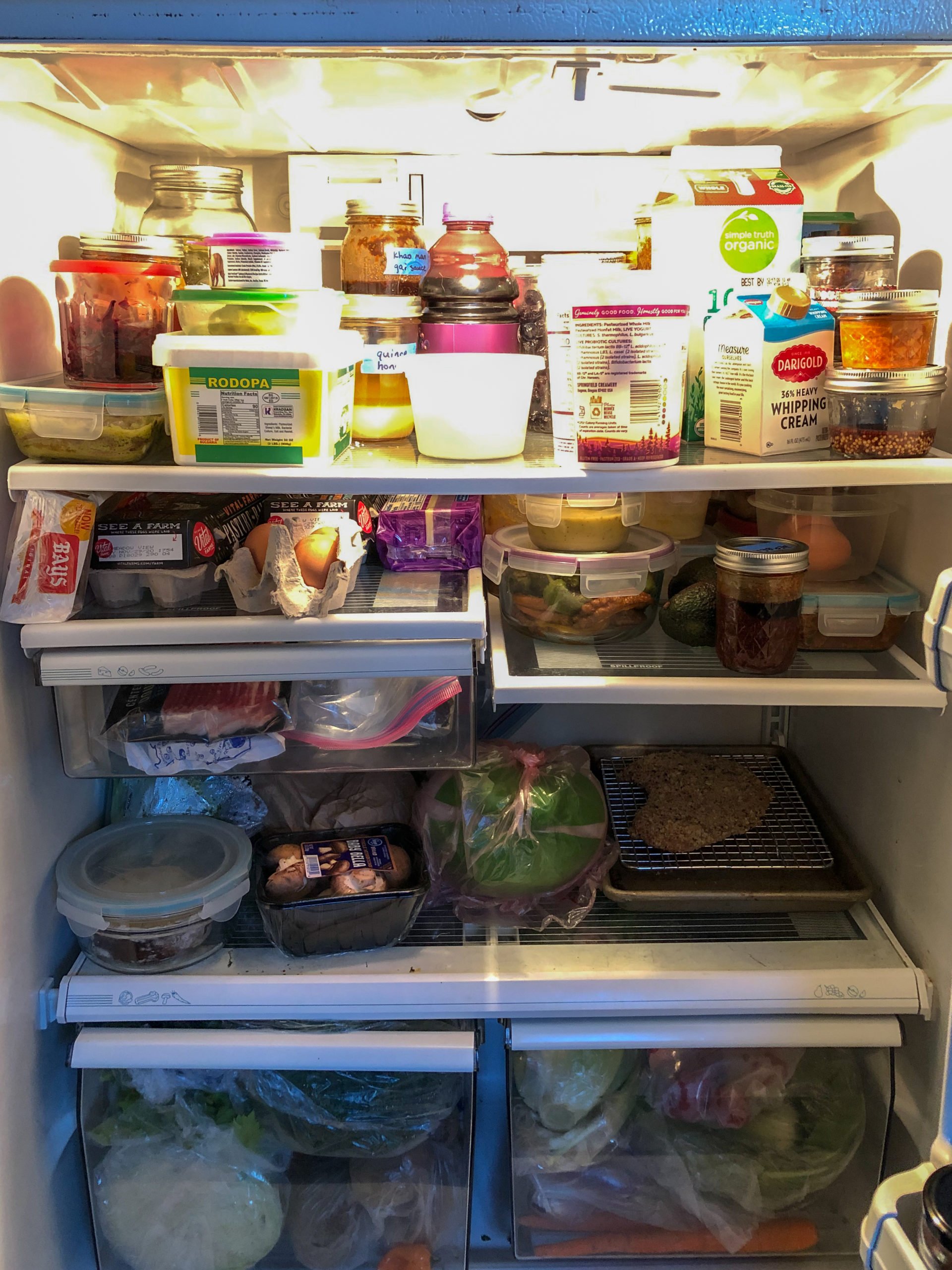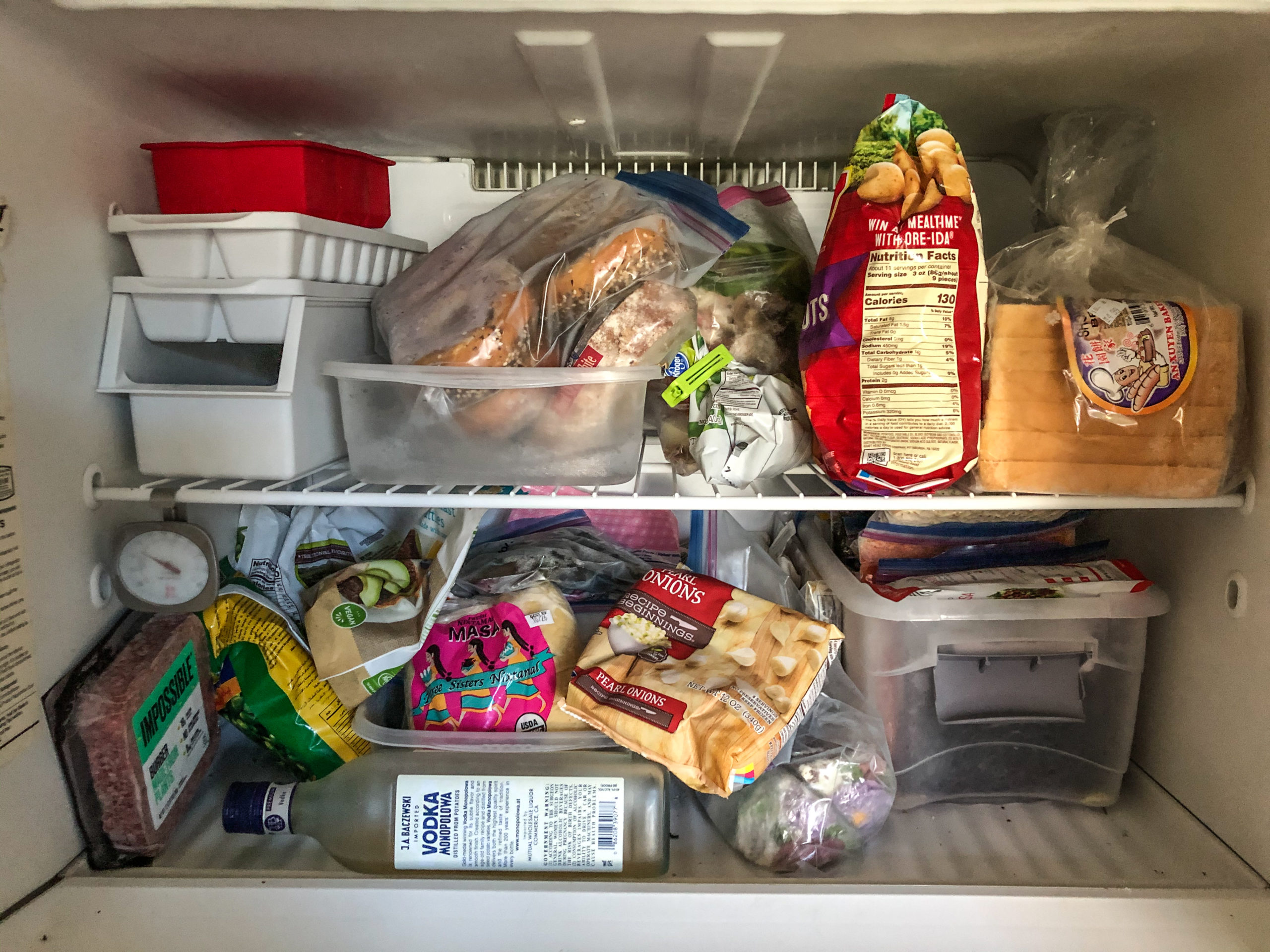Joy of Cooking is an instantly recognisable, iconic cookbook. There are plenty of different editions of it to choose from, and most of us grew up seeing at least one edition of them in our mother’s or grandmother’s kitchen. If you own the latest, its editors, John Becker and Megan Scott, are the people you should be thanking. In addition to developing over 600 new recipes, they tested, tweaked, and updated every chapter to reflect how people cook and eat today. In Joy and online, John and Megan (who happen to be married) keep the focus on the food, taking a holistic and inviting approach to the art of cooking and the fun of eating (and the occasional frozen pizza).
At the beginning of the pandemic, you posted a Twitter thread on how maximise the number of meals you get from one recipe, and it was quite pantry heavy. Do you feel like people are still doing that kind of cooking this far into the pandemic?
Megan: I think a lot of people have cooking fatigue.
John: We just assume that “pantry cooking” is a default. People are still not going out to restaurants if they’re smart. Not to say that people who are going to places that are being responsible are dumb. But I mean, frankly, I still think it’s stupid, mostly because you’re putting kitchen staff at risk. It’s great that the waitstaff are taking all these precautions and you’re all well-distanced and eating outside. But what about the people who are making your food?
Megan: But when we were working on Joy and writing the streamlined cooking chapter, the thing we were most excited about teaching people was how to cook not as a performance, but as a practice. You don’t have to always start with a recipe and then go make your grocery list, get the exact number of groceries you need for this recipe, make the recipe, eat the whole thing, and then start all over again the next day. It’s exhausting and it really sucks and it’s not efficient at all. But if you can use what you have, or find a recipe but then make substitutions or tweak it to fit what you have and what you like — that’s just a more holistic approach to cooking. I think it’s more enjoyable once you get the hang of it than trying to follow a recipe every single time.
John: I mean, I don’t know how other people operate. Rene Redzepi or Grant Achatz might sit down with a goddamn piece of paper and be like “Well these ingredients are going to go well together. I think I will create a new dish” and for me, and I think for 99% of people, they don’t have those “Eureka!” moments when it comes to creativity. They’re just like “I have this. I’m going to sub it in this recipe because it’s what I have, and holy shit, it tastes great.” Or “I’m going to use these leftovers in a different way than I’ve ever thought of doing.” And that’s a kind of creativity that I like, as opposed to purchasing your way towards some sort of really unique recipe. It’s much more sustainable and you’re going to get less burnt out.
I feel a lot of food writing now is like “This is the perfect recipe for this dish, and if you do it any other way, you’re wrong,” and I don’t think that’s fair.
Megan: No, it’s not fair and it’s not accurate. It is full of hubris and it’s just not reality. We really dislike that approach as well.
John: It’s naive. It kind of reminds me of home economists and behavioural psychologists, like we’re gonna be able to predict the outcome because we were able to reproduce something in the lab. “This is how people act. This is what’s going to happen.” I mean, it’s not futile to write recipes, of course. Just insisting on a certain level of precision — at a certain point, it’s diminishing returns, and it’s also turning people off. You don’t have to teach creativity. You just have to encourage people to stop worrying about what happens.
Megan: And to that point, not everything is gonna be amazing. You might fuck something up or it doesn’t taste the way you want, but you learn things when you do that.
John: If you raise everything to like “this is an aesthetic creation,” then you have to judge yourself by that very same metric. I mean, I’m self-critical enough. I don’t need to have that interfering with: A) my creativity and, B) how I fucking nourish myself and my wife. So might as well stop caring.
That’s the hack. Just stop caring. Speaking of pantry cooking: What’s usually in your pantry?
John: As far as grains go, we still have so many leftovers from testing for the book.
Megan: It’s a little embarrassing because it’s almost a Sam Sifton “Oh, I happen to have a fist of duck.” We have a lot of Rancho Gordo beans, and we have a lot of spices, and chillis.
John: I remember buying them specifically to compare how they cooked, time-wise — two different kinds of farro, one of which was semi-pearled and the other which was less so… like, demi-pearled.
Megan: I’m trying to think of stuff we keep in our pantry that we actually use a lot, like sardines.
John: One thing that’s been kind of a new addition that’s fantastic: we saw a Taste article on this fried dace with black beans. That shit is amazing. And we definitely have been stocking that ever since.
Megan: Tons of rice. We eat a lot of rice.
John: We always have to have Jasmine.
Megan: And a short grain.
John: Megan’s uncle’s ex girlfriend turned us on to Tamaki Gold, which is a short grain Japanese style rice, which is really fantastic. And Tilda Basmati is really good.
How do you keep track of everything?
John: I wish I could tell you that we do first in, first out, and date things.
Megan: Well, I do have a spreadsheet.
John: That’s for the freezer!
Megan: No, I have the pantry stuff on there too. I don’t have every single spice that we have listed, but I have a Google sheet of what’s in our fridge, what’s in our freezer, what’s in our pantry — like main ingredients.
John: This should give you an idea of the division of labour. I actually have to update the spreadsheet. I just didn’t realise that all that was on there. Since I’m househusband now, I have been trying to do more of this record keeping and expense tracking. I’m doing ok, I think.
Megan: You’re fine.
John: Thank you.
Megan: Luckily our garage is right next to our kitchen. We have a bunch of metro shelving in our garage where we keep most of our pantry stuff, because there’s not enough room in our kitchen. So it’s easier to see everything because it’s all spread out.
John: My mum would get a lot of spices at Costco, and they would just last for years, and they were always lost because — I think it was just one cabinet, but it was just stuffed full. We go through the spices enough, and enough of them are whole. But the whole spices have gone way past what we recommend keeping them around for. But at least, once you grind them, they kind of still have some smell.
Is that a “do as I say, not as I do” kind of thing?
Megan: That’s definitely one of them. We try to be good, but there’s a lot of them, and they are in glass jars and they probably shouldn’t be exposed to the sunlight. They should probably be in opaque jars or containers.
John: The Masons and their lids are just so easy to clean. Maybe we should frost the glass. Then make some candles.
Megan: That’s the weird thing about working on Joy of Cooking — you’re trying to provide really solid advice, the best advice you can give to people, but sometimes life gets in the way and you don’t necessarily abide by all that advice all of the time. And it’s ok.
John: I mean, apparently Ina Garten gave up in May. She’s been giving these interviews where she’s like, “Well, I was doing the recipe testing and I was cooking for me and Geoffrey and I just fucking gave up.” This is all from Paula Forbes’s newsletter, which is pretty good. But yeah, Ina was like “Sometimes I don’t unload the dishwasher all the way and I put dirty dishes in there and I run it again.” We don’t do that shit, but we have bought our fourth frozen pizza this month.
Megan: We’re leaning into freezer meals right now.
What frozen pizza do you buy?
John: I need to develop a new favourite, but this one was “Screamin’ Sicilian” or something, and they’re not bad.
Do you modify them?
John: This last time: it was just a frickin’ cheese pizza.
Megan: All the cheese.
John: And I think Megan had brought home some sopressata. So halfway through the bake I just put sopressata on top. I mean back in the day my favourite thing — No! Never mind! I’m not going to say that.
Please tell me.
John: Ketchup. On cold, leftover frozen pizza. I’d put ketchup on it. Horrible and delicious.
What kind of ketchup?
John: I mean, Heinz. We have a recipe for a “quick ketchup,” which is basically the double concentrated tomato paste — though it doesn’t have to be double concentrated — and then you [add] a little of any kind of invert sugar like corn syrup or honey, but I don’t like honey in my fucking ketchup. Then some vinegar or a little powdered clove or whatever. It’s really good, but it’s still not Heinz.
Megan: This is like emergency ketchup. Like if you really want ketchup for something, but you don’t have any and you don’t want to go anywhere. So you just make this little batch of quick ketchup. And it scratches that itch, I think.
John: So condiment-wise: A new mustard has emerged. I always think of it as “extra scharf.” It’s Löwensenf.
Oh, it’s in one of these metal squeezy tubes.
John: Yeah. And speaking of — tomato paste needs to come in these tubes and that’s it!
Megan: I saw a gochujang brand that was doing it in a tube, and I was like “Oh, dang.” That’s such a good idea.
John: We don’t do big purchases like this anymore, but for a while we were getting a good Amazon deal on tomato paste. I can’t remember the brand. It was awesome. It’s like triple concentrated. We’d get like a fucking twelve pack.
Megan: A case.
John: Two dollars a pop! You know, when we were testing, we’d go through it.
Besides the frozen pizza, what other freezer meals do you have on deck?
Megan: We made a big batch of burritos for me to take to work because I’m really bad at feeding myself during the day when I have to go to work, even though I cook at my job. It’s just weird.
John: Those were made with smoked pork barbecue that had been frozen a year ago.
Megan: Not a year ago. Maybe six months ago.
John: Recently we had a weird amount of prepackaged ground meat. And I scaled a meatball recipe to use all of it — it was pork and beef — and then I ended up freezing like half of that IQF-style on a sheet pan. So there’s some raw meatballs ready to be cooked. And we broil them, because we’re dirt people.
Megan: Heathens.
John: But it’s so easy. And that was from one meal that I made for my mum when she was in town. It’s something we don’t do enough, but we should. When you make something, make a little bit more.
Megan: And freeze it.
I like that approach better than “make a big batch and eat it the whole week.”
Megan: That’s boring. It’s so boring.
John: It’s like you’re your own institutional cafeteria cook
Can I see inside your fridge?


Did you guys get on the sourdough kick at all?
John: A little.
Megan: Well, actually not really.
John: Yeah, because we killed it again.
Megan: I murdered my starter again. They’re really hard to kill, but I just…
John: There’s no coordination between us.
Megan: I started baking in 2011 or something and sometimes I’ll do it regularly and then it falls off. And I [will] take the starter out of the fridge like “I’m gonna feed it and I’m going to make sourdough on Friday,” and then I just don’t. And then it sits around for a few days and I’m like, “Well, I’ve already waited three days so I guess I’ll just let it die now.”
John: It’s usually vinegary. It has to exhibit symptoms before we put it out of its misery.
Megan: It’s easy enough to just make a new one. At first I was almost religious about it. “Oh, I want this sourdough starter…”
John: “…to be 90 years old!”
Megan: Yeah. And then I killed it and I was like “It’s actually easy to make a new one.” So. It doesn’t matter that much.
You also can buy them.
John: Tara Jensen — Megan used to work at a farmer’s market in Ashville right next to her — she sells a dehydrated sourdough starter. And I guess there’s some other company that has dehydrated sourdough starters from Egypt and South Africa — all over the world. That was a weird rabbit hole to go down one day.
There are so many rabbit holes in food.
That was my favourite part about the book — that it was one rabbit hole after another. But I wouldn’t get lost because there was a purpose. I feel lucky for that.
Having a focus really helps.
John: That’s really the most fucked up part about watching how food media is trying to pivot in this particular time. How much of this is actually trying to help people? How many of these people have actually spent their careers trying to help people versus developing a personal style-slash-brand or [trying to] get as many clicks as possible? I mean the extreme of course would be those really heinous videos with, like, blocks of Velveeta.
Chef’s Club!
Megan: The last one with the scrambled eggs inside the block of cheese. I never feel like I know what’s gonna happen next.
John: At least there’s suspense. But I look at a a lot of this stuff that our industry has produced, over the last however long I’ve been paying attention and think to myself… I mean, everything makes sense. But the intention is… I don’t know.
I know what you’re saying. We’re all trying to make a living writing about something that’s existed forever. There’s only so much you can really say about it.
John: You could talk about chefs. That’s what people have been doing.
Yeah, and people don’t eat like chefs. It’s a different motivation.
John: My house is not a brigade, and I’m not a fucking boss. Whenever anyone has called us “chef” — either one of us — it’s just like “no.”
Megan: Yeah. People don’t know anything but “chef,” it seems. I’m not a chef. I’m just a cook, and I write recipes.
John: I try not to be a dick about it, but I’m just a cook. “Chef” means “boss.”
Megan: Yeah. “Chef” means “head” or “boss.”
John: Again, I try not to be an arsehole.

Leave a Reply
You must be logged in to post a comment.